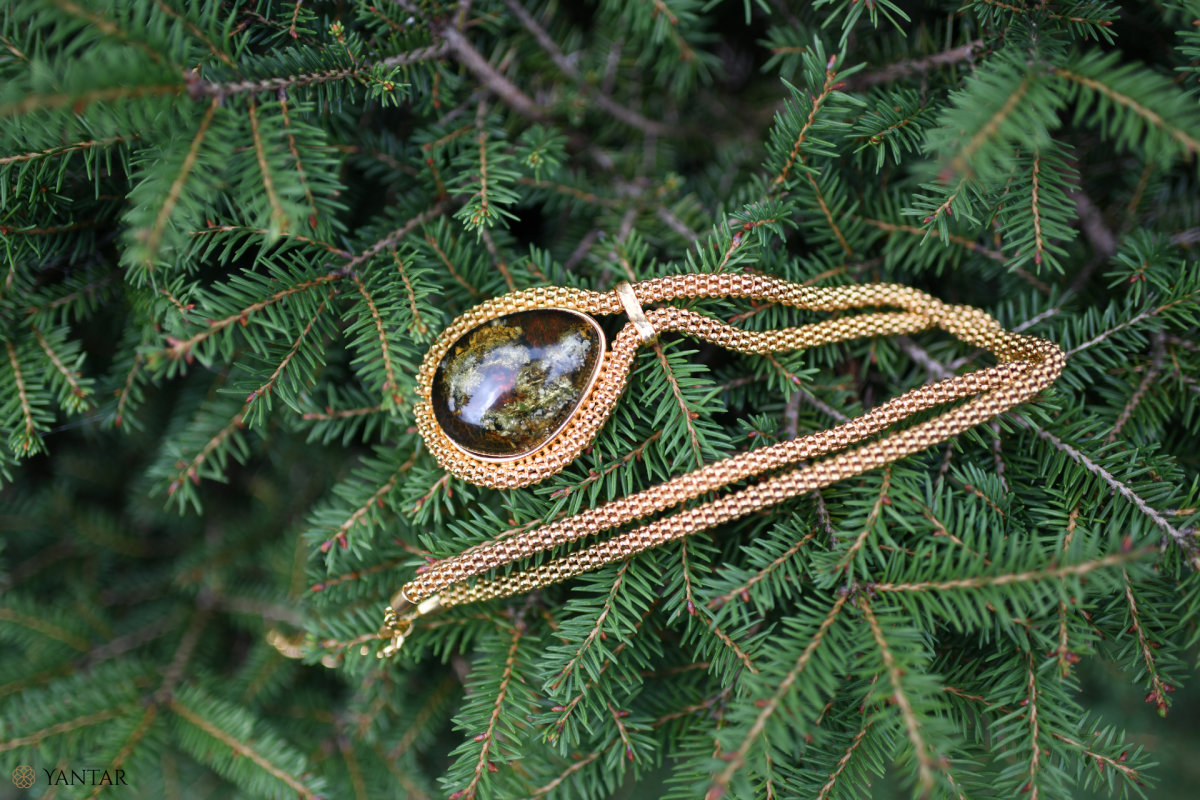|
Amber, with its warm, golden hues, has captivated human beings for millennia. Beyond its aesthetic appeal, amber has long been attributed with various healing properties, often rooted in ancient myths and folklore. But how do these traditional beliefs stand up against modern scientific scrutiny? This article explores the healing properties of amber, contrasting age-old myths with contemporary scientific understanding.

Image source:yantar.ae
The Ancient Myths Surrounding Amber
Amber, often referred to as "fossilized sunshine," has a rich history intertwined with mysticism and healing practices. In various cultures, it was believed to possess powerful protective and healing properties, attributed to its origins from tree resin. Let's delve into some of the most prevalent ancient myths:
1. Amber as a Protective Talisman
In ancient Greece, amber was known as "elektron," believed to have been formed from the tears of the Heliades, the daughters of Helios, the sun god. It was considered a powerful protective talisman, warding off evil spirits and negative energies. Warriors and travelers carried amber amulets to ensure safety and protection during their journeys.
2. Healing Physical Ailments
In traditional medicine, particularly in ancient Rome and China, amber was used to treat a variety of physical ailments. Ground into powder and mixed with honey or water, amber was consumed to cure respiratory issues, digestive problems, and even to promote longevity. It was also burned as incense in rituals to cleanse the air and promote healing.
3. Emotional and Spiritual Healing
Amber has been associated with emotional and spiritual healing in many cultures. It was believed to calm the mind, alleviate stress, and bring about a sense of peace and well-being. In ancient Baltic cultures, amber was often placed on the bodies of the deceased to ensure a smooth passage to the afterlife, signifying its role in spiritual protection and healing.
.jpg)
Modern Science and Amber’s Healing Properties
While ancient myths provide a fascinating glimpse into how amber was valued in the past, modern science approaches the subject with a more critical eye. Let's examine the scientific perspective on amber's alleged healing properties.
1. Succinic Acid: A Natural Anti-Inflammatory?
One of the primary components of amber is succinic acid, a substance found naturally in the human body and in certain types of tree resin. Succinic acid has been studied for its anti-inflammatory and antioxidant properties. It is believed to help reduce inflammation, making it a popular ingredient in some modern health and wellness products, particularly teething necklaces for babies.
However, the scientific community remains divided on the efficacy of succinic acid when used in the form of amber jewelry. Some studies suggest that when amber is warmed by the skin, small amounts of succinic acid may be released and absorbed into the body, providing anti-inflammatory benefits. Others argue that the amount of succinic acid absorbed is negligible and unlikely to have any significant impact.
2. Amber in Modern Aromatherapy
Amber has found a place in modern aromatherapy, often in the form of essential oils or incense. The warm, resinous scent of amber is said to promote relaxation, reduce stress, and enhance mood. While there is some scientific support for the benefits of aromatherapy in general, the specific effects of amber scent are less well-documented.
Nonetheless, many people find the scent of amber soothing and use it as part of their wellness routines. Whether its benefits are scientifically proven or more of a placebo effect remains a topic of debate.
3. Amber for Pain Relief: Fact or Fiction?
The use of amber for pain relief, particularly in the form of necklaces and bracelets, has become popular in recent years. Proponents claim that wearing amber can alleviate pain, especially for conditions like arthritis or teething pain in babies. The theory is that succinic acid is absorbed through the skin, where it acts as a natural analgesic.
While there are anecdotal reports of pain relief from wearing amber, scientific evidence to support these claims is limited. Most studies conclude that any perceived pain relief is likely due to the placebo effect rather than a direct action of the amber itself.
The Psychological Power of Belief
Even though modern science may not fully support the ancient claims about amber's healing properties, the psychological power of belief should not be underestimated. The placebo effect—where the belief in a treatment's efficacy can produce real, measurable benefits—is a well-documented phenomenon in medicine.
For many people, wearing amber or using it in various forms may offer comfort, reduce anxiety, and even help manage symptoms simply because they believe in its healing powers. In this way, amber's role as a healing substance remains relevant, bridging the gap between ancient tradition and modern psychology.
Amber continues to be cherished not only for its beauty but also for its supposed healing properties. Whether one views amber through the lens of ancient myths or modern science, its allure is undeniable. While scientific evidence may not fully support all the traditional claims about amber, the stone’s cultural and psychological significance persists.
In the end, whether amber is a potent healer or simply a beautiful gemstone with a rich history, its role in human culture and belief systems remains strong. As we continue to explore the intersection of ancient wisdom and modern science, amber serves as a reminder of the enduring human quest for healing and protection, both physical and spiritual.
|